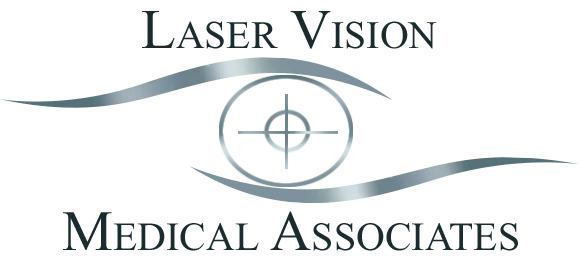Information on Presbyopia by Our Ophthalmologist
The word presbyopia comes from the Greek language and means “Old Eyes”! How true but highly variable in age of onset. In normal sighted patients who have never required glasses for distance vision symptoms of difficulty reading print usually begin in the early forties. To compensate, patients hold the printed material further away, increase the light and eventually buy over the counter reading glasses, typically in the lowest power, +1 Diopters. Why is this happening?
What Causes Presbyopia?
Although patients often think their eye muscles are getting weak that is not the problem. The lens of the eye, located just behind the iris (colored part of the eye), is becoming less elastic as we age. Young children with normal eyes can hold print just a few inches from the eye and still read because the young lens is very pliable and so it easily adjusts to a more rounded shape when we focus on near objects. When the eye changes focus to distance vision, the lens changes shape and becomes thinner. This change in focus is called accommodation. In the early forties reading at a normal distance becomes difficult so the solution is to move the print further away. That works for a while but eventually the arms aren’t long enough so reading glasses are required. This loss of near focusing power gets worse slowly every year and stabilizes at around age sixty when the typical patient now requires +2.50 to +3.00 powered reading glasses.
Presbyopia for Nearsighted Vision
Nearsighted (myopic) patients also become presbyopic but they can compensate by removing their glasses and still read. If they are mildly nearsighted (e.g. -1.00 to -3.00 D) they can then read without glasses at a comfortable distance. If they are very nearsighted e.g.– 10 D) they will have to hold the print very close to their eyes, about 5 or 6 inches so it is not practical and they will then typically use bifocal glasses.
Presbyopia for Farsighted Vision
Farsighted (hyperopic) patients will have the onset of presbyopic symptoms at an earlier age, often late thirties and early forties if their farsightedness is mild. Initially they will only need glasses for reading but within a few years will also require glasses for clear distance vision also and will usually choose bifocals to avoid two pairs of glasses. Patients who are more farsighted (e.g. +2.00 D or more) will experience blurred distance vision at an earlier age and will already be wearing glasses for distance vision and may not need bifocals until around age 40 when they may then choose bifocals.
Laser Treatment for Presbyopia for the Communities of Los Angeles, Santa Monica, Beverly Hills, and Culver City
For presbyopic patients who are seeking an alternative to glasses they can consider mono-vision LASIK where one eye is focused more for distance vision and the other eye focused more for reading vision. The latest surgical option that does not use the mono-vision strategy is the Kamra “pinhole” corneal inlay. Both monovision LASIK and the Kamra inlay are discussed in more detail in other pages on the website. Call 310-444-1134 to schedule an appointment at our Ophthalmology clinic, Laser Vision Medical Asssociates.
